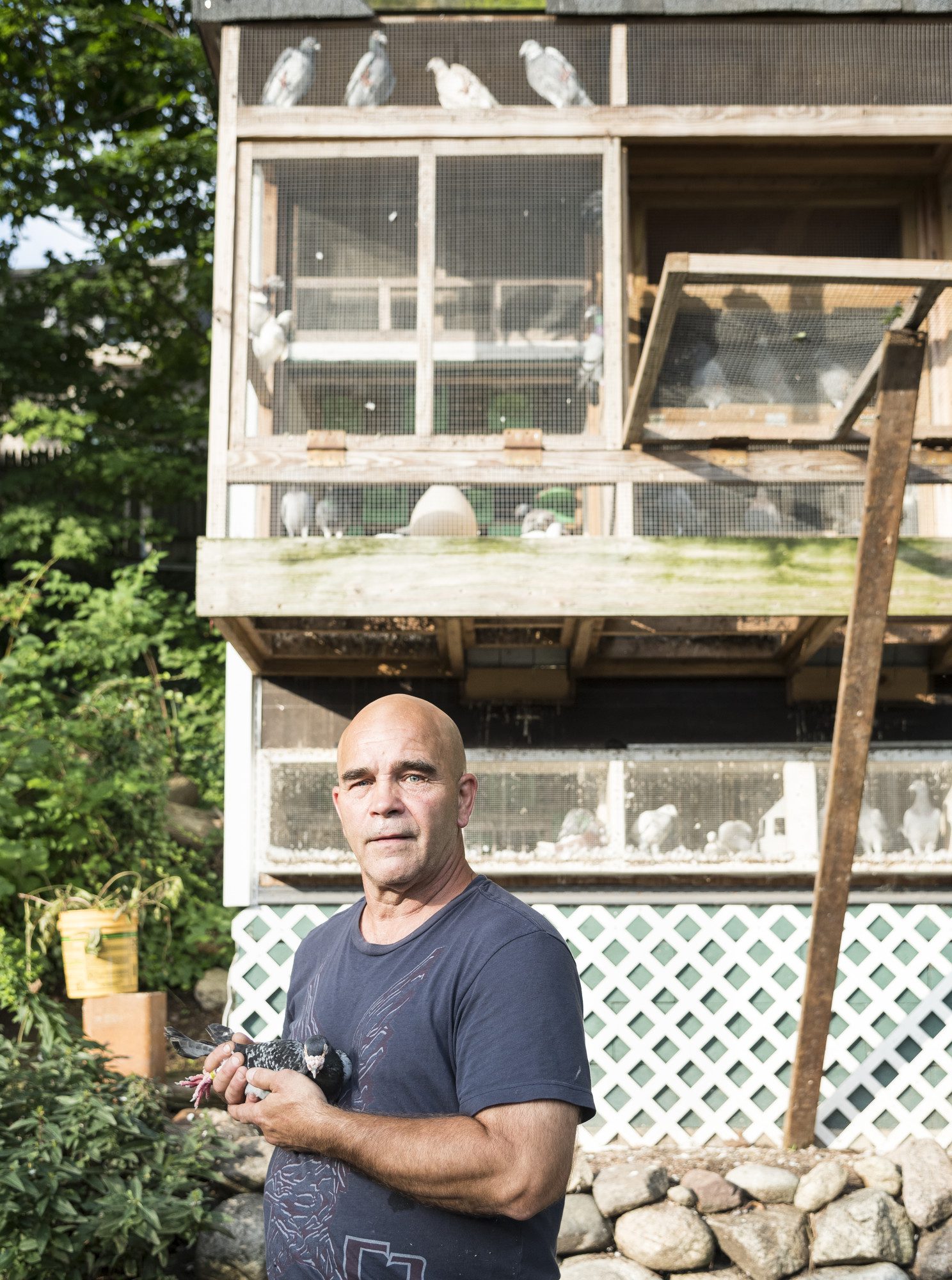LYNN — Fanciers, rollers, and tumblers — Paul Lewis speaks the language of flight, specifically as it applies to the 60 homing pigeons he keeps behind his Lynnfield Street home.
The birds live in a roughly six-foot square, 20-foot tall coop that emits the constant low-pitched warble of cooing pigeons. With names like “Coco,” “Ma,” and “Stevie,” the birds soar aloft shortly after 7 a.m. when Lewis gets home from working an overnight shift as a machinist at Kettle Cuisine.
The sky is theirs until the evening when they return to the coop for a high-protein meal of millet, dried peas and other feed. Lewis lives a life partly dictated by the feeding, mating and flight aspirations of his pigeons.
“There used to be a lot of people in Lynn who did this,” he said.
Pigeon raising is in Lewis’ blood. So is racing. Best known for sitting on roofs or pecking bird seed, pigeons are capable of flying for hundreds of miles and up to 75 miles per hour — all the while capable of finding their way home.
“Only the birds know how they do it,” Lewis said.
Race winners are birds that travel from a pre-designated release point back to their coop in the fastest amount of time.
Lewis, 58, learned to love and care for pigeons at his father’s side in his native Chelsea where the older Lewis kept “racing homers” — competition pigeons — in a coop in his workshop. Paul Lewis learned to feed the birds and remembers rushing from school in time to help his father tend to the pigeons.

“I was fascinated with it,” he said.
Lewis and his younger brother, Edward, a Winthrop resident, both carried on their father’s love for pigeons into adulthood. Paul strayed away from the hobby until seven years ago when he built the coop behind his house and made it a home for “homers.”
The coop is divided into two types of pigeon residences. Every bird has a perch but the coop also has nest boxes for families with the male and female bird taking turns sitting on the egg and standing guard against intruders. Pigeon eggs take 18 days to hatch, said Lewis, and a month passes before a young bird is independent enough to fly.
A screened front wall called an “aviary” folds down to provide a porch for the pigeons. Hawks and other high-soaring predatory birds are the pigeons’ enemies. They know to bunch into flocks when a hawk or falcon appears and Lewis lets go a high-pitched whistle to scare the predators off when he spots one high above Lynnfield Street.
Lewis’ most recent race three weeks ago is not one of his proudest. Only one of the nine birds he arranged to fly from a sanctioned release point in Ohio made it home. He said the others may have ended up with other birds in another coop or been blown off course by bad weather.
“Birds, feathers and water don’t mix,” he said.
Competitors use a timing device to register the “counter mark” — a number stamped onto a rubber leg band worn by the competing birds. The timer runs while racing is underway, sometimes for days, and when the bird returns, the countermark is recorded and the time the bird returned to the coop is compared to the time when the bird was released to fly to calculate the fastest competitors.
Racing season runs from March to July, said Lewis, and some owners rigorously train the birds by starting them off with short distance races of a few miles and breeding “leader birds” to set a competitive pace for other birds.
Racing pits pigeon owners, known as “fanciers,” and clubs against one another but the pigeon’s uncanny ability to “home in” on its coop has made it valuable throughout history, including in wartime, as a messenger.
Although his adult children have not carried on the interest in pigeons, Lewis’ wife, Kim, takes a tolerant interest in the family birds and their grandchildren and neighborhood kids are fascinated by the coop and its occupants.
“I want to see younger kids get into it,” he said.

